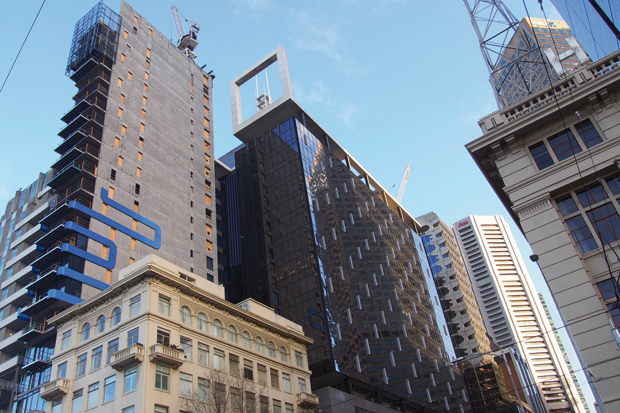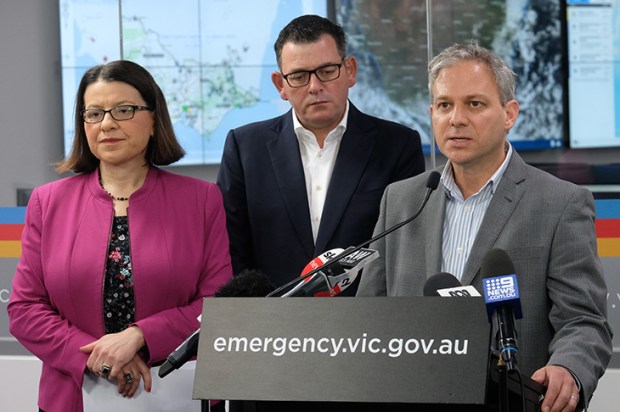At the height of the ten-year drought, when it looked like Melbourne might never again get the kind of rains needed to fill its dams and rivers, the then Labor government panicked and commissioned the construction of Australia’s largest desalination plant along Victoria’s Gippsland coast, east of Melbourne, to turn sea water into fresh water.
Problem was, the drought broke in 2010 and by then the contracts had been signed for the building of the facility at a cost of $3.5 billion, with the real cost to taxpayers closer to $20 billion over the next three decades, even if the state does not buy a single drop of the water it is capable of producing.
The only water produced so far has been 25 billion litres during the plant’s month-long commissioning phase last November/December — the plant can make 150 billion litres of water a year — and since then zilch, not a single drop. And with the state’s dams at around 75 per cent capacity, it is unlikely any water will be ordered any time soon. Even so, in 2013-14, the plant will cost Victorian taxpayers $649 million in payments to the plant owners AquaSure. But who’s counting? It’s only our money.
Still, what we have here along the coast, between Kilcunda and Wonthaggi, at the edge of the continent, facing Bass Strait, is a remarkable piece of infrastructure which, in the years and decades to come (when, if you believe climate change doomsayers, Melbourne will experience serious water shortages), we won’t be able to survive without.
It is not easy to see, however. If you know where to look, you can pick it out as a sliver at the edge of the coastline, just below a bank of wind turbines turning in the breeze. But, as in a filmic sequence of images flashing by, you’ll need to be on the lookout, because if you blink, you are likely to miss it.
Up close, however, concealed below a ring of man-made sand dunes, you’ll find an industrial facility on a massive scale: 29 buildings spread across 38 hectares, each aligned precisely, designed for turning seawater into safe drinking water.
The process is simple enough: water is pumped from a line 1.2km out to sea; passed through banks of filter tanks, then through two stages of reverse osmosis where minerals and salts are removed; it has chemicals added, such as fluoride and chlorine and lime to remineralise the desalinated water; and then it emerges as drinking water for pumping 84km to Cardinia Reservoir and from there to your tap.
The task of integrating the plant into the Bass Coast landscape was handed to architects Peckvonhartel and ARM Architecture, together with landscape architects Aspect Studios. And to their credit — for this is, in the end, a production plant of immutable set pieces, a water factory — what they’ve delivered is an impressive piece of landscape and architecture on a grand scale.
Arrival is along a shallow valley shaped by a ring of man-made dunes, landscaped in swirling patterns of red scoria and grey and black basalt, symbolic of the area’s coal-mining history. An administration building at the end of this orchestrated sequence is remarkable only for a raking façade of green-tinged glass sun louvres and a dramatic, internal suspended stair that takes you up to offices before continuing as a ramped walkway to a viewing gallery.
But it is beyond here that there is the kind of drama I’m not sure the public will ever experience fully. Because in its vastness, beneath endless blue skies, you could be walking through a gigantic film set erected on some soulless, windswept landscape for the making of a movie about a post-apocalyptic world.
Or, in its stark unsentimentality, with its precisely placed concrete buildings, lines of steel containers, steel storage tanks, turbines, valves, banks of submarine-sized pressure filters beneath folded steel roofs, lamp posts, iron catwalks and the wind turbines in the background, you could be wandering through every desolate industrial wasteland Jeffrey Smart ever painted.
To get a true sense of all this you need to get up in the air, in a helicopter. For it is from above that you’ll get to understand that what’s been created here is a piece of large-scale land art. Inspired by ideas of marking the land, the architects loosely adopted the form of the star sign Aquarius, the water carrier, to shape the dune system encircling the plant. The roof form of the gigantic 200 metres by 200 metres reverse-osmosis plant at the heart of the water-making process was inspired by the earth sculptures of American land artist Michael Heizer, in particular his enormous zig zag trenches dug into a dry lake-bed in the Nevada desert. Now planted and turned to green — it is the largest planted roof in the southern hemisphere — to walk on the roof is an exhilarating experience. The space between the zig zag roof — it meanders for a kilometre — is decorated with swirling shapes based on interference patterns caused by colliding wave flows. At some point, when the dunes green up, they will appear to join with the roof of the plant to create what the architects refer to as ‘the green line’ encircling the complex.
And here’s my dilemma: the public will, probably, never have access to the roof, never get to see the swirling interference pattern in the space between, never get to experience the vastness of the four-hectare roof. And if all this has to be explained to the observer, is the point of the design a bit futile? It’s a pity, for successful integration of landscape and architecture at this scale to make earth sculpture is rare, and a thing of beauty, if only you could get to see it.
The greater part of the site, 225 hectares surrounding the plant, is being developed into a public ecological reserve, with eight kilometres of walking tracks, wetlands and extensive plantings.
Got something to add? Join the discussion and comment below.
Joe Rollo a former writer at the Age.
You might disagree with half of it, but you’ll enjoy reading all of it. Try your first month for free, then just $2 a week for the remainder of your first year.













